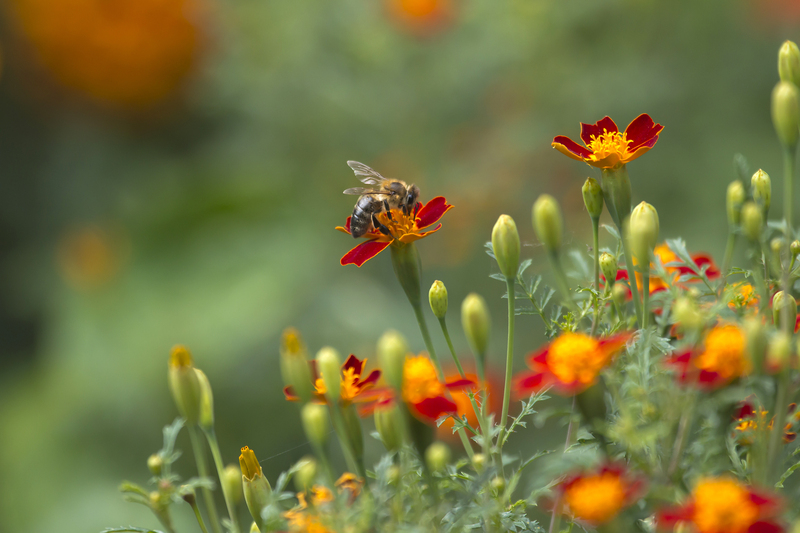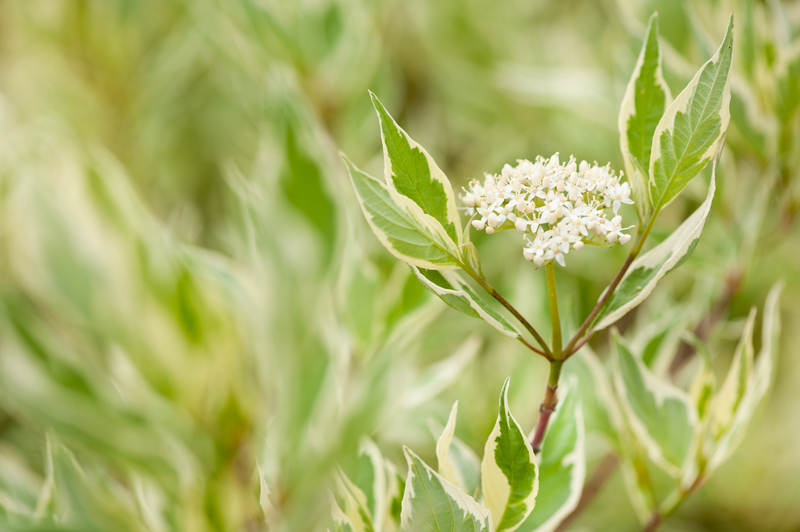Professional Hedge Shapes for a Polished Garden Look
Posted on 02/06/2025
Professional Hedge Shapes for a Polished Garden Look
A well-manicured garden reflects not only the beauty of nature but also the meticulous care of its owner. Among all landscaping elements, professionally shaped hedges are a standout feature that elevate your outdoor space to a new level of sophistication. Choosing the right hedge shapes and maintaining them effectively can convert a simple garden into a lush, highly-structured sanctuary. If you're seeking inspiration and guidance on crafting a polished garden look with hedges, this comprehensive article has you covered.

Why Hedge Shapes Matter in Garden Design
Hedges are more than just living fences. When professionally shaped, they act as green architecture, defining spaces, adding privacy, and guiding the movement within the garden. A thoughtfully clipped hedge introduces symmetry, rhythm, and structure that can transform even the simplest plots into elegant landscapes. From classic English to modern minimalist, different hedge designs play unique roles in enhancing curb appeal and value.
Benefits of Professional Hedge Shaping
- Improved Aesthetics: A professionally shaped hedge offers clean lines and crisp boundaries, contributing to a polished overall appearance.
- Defined Boundaries: Well-clipped hedges mark property borders and garden areas elegantly without harsh fencing.
- Privacy and Shelter: Dense and tall shapes provide natural screening against wind, noise, and prying eyes.
- Enhanced Plant Health: Regular pruning improves air circulation, sunlight penetration, and overall plant vigor.
- Biodiversity and Wildlife Habitat: Hedge structures provide shelter, food, and nesting opportunities for birds and pollinators.
Popular Professional Hedge Shapes & Their Uses
Modern and traditional gardens alike employ a variety of professional hedge shapes tailored to different design intentions. Here's an in-depth look at the most polished and practical forms:
Formal Rectangular or Box-Shaped Hedges
Box-shaped hedges are perhaps the most recognizable form in formal landscaping. Their precise lines and sharp angles offer a regal, stately effect, often employed to create symmetrical patterns and structured borders.
- Best for: Borders, pathways, garden rooms
- Plant choices: Boxwood (Buxus sempervirens), Yew (Taxus baccata), Privet (Ligustrum spp.)
- Maintenance tip: Shape at least twice a year for crisp lines
Rounded or Dome-Shaped Hedges
For a softer, welcoming aesthetic, rounded hedge shapes are favored. They bring fluidity while maintaining tidiness, helping to offset rigid hardscapes or soften corners.
- Best for: Corner plantings, standalone features, informal pathways
- Plant choices: Boxwood, Holly (Ilex species), Laurel
- Maintenance tip: Gradually round off upper corners with careful clipping
Pyramidal or Tapered Hedges
Another signature look for upscale gardens is the pyramidal or tapered box. The base is broader, gently narrowing toward the top. This shape supports light distribution and reduces snow damage.
- Best for: Vertical accents, garden entries, statuesque plantings
- Plant choices: Yew, Juniper (Juniperus), Arborvitae
- Maintenance tip: Regular pruning ensures a gradual, consistent taper
Cloud-Pruned or Topiary Hedges
For a garden with artistic flair, cloud-pruning and other topiary styles allow the creation of abstract, whimsical forms. This technique involves shaping hedges (usually evergreens) into soft, billowy mounds or creative figures like spirals, animals, and geometric objects.
- Best for: Focal points, Zen and Japanese gardens, entertaining children
- Plant choices: Boxwood, Privet, Yew, Myrtle
- Maintenance tip: Requires frequent attention and a careful hand for intricate shapes
Naturalistic or Informal Hedge Shapes
Not all professional hedge shapes need to be rigid. Naturalistic hedges blend seamlessly with the landscape, providing privacy and wildlife habitat without looking overly manicured.
- Best for: Boundary screening, wildlife gardens, countryside homes
- Plant choices: Hawthorn (Crataegus), Beech (Fagus sylvatica), Hornbeam (Carpinus betulus)
- Maintenance tip: Prune sparingly--just enough to retain overall form
Multi-Tiered or Layered Hedges
For dramatic impact, consider multi-tiered or layered hedges--multiple rows of hedges in ascending or descending heights. This style is especially impressive in formal parterres or grand estates.
- Best for: Estate lawns, public gardens, maze designs
- Plant choices: Low-growing Boxwood, medium Yew, tall Privet
- Maintenance tip: Consistent height management and staged planting
Wavy or Undulating Hedge Lines
Modern designers love to experiment with wavy hedge lines. These playful shapes bring motion and creativity to the traditional garden, flowing across spaces or echoing natural contours.
- Best for: Contemporary gardens, naturalized landscapes, public parks
- Plant choices: Boxwood, Lonicera, Euonymus
- Maintenance tip: Mark the shape out with rope or hose before clipping
How to Achieve a Polished Garden Look with Hedge Shapes
A garden's refinement is determined by both plant selection and maintenance. Let's explore the essential steps to master professional hedge shaping:
1. Choose the Right Plant for the Shape
Some plants tolerate heavy pruning better, regrow quickly, or maintain dense foliage. Boxwood and yew are classic for tightly clipped forms, while laurel and privet suit taller, looser hedges. Ensure your choice fits both your style and local climate.
2. Plan and Measure
For precision hedge shapes, layout is crucial. Mark boundaries with string, stakes, or even wooden frames. For curved or wavy shapes, use flexible garden hoses as a guide. Always step back to assess proportions from different angles.
3. Prune Regularly and Correctly
To retain a polished appearance:
- Start pruning when plants are young to encourage bushiness from the base.
- Use sharp, clean shears: Dull tools tear leaves and cause browning edges.
- For formal shapes, use boards or templates for even surfaces. For informal styles, prune lightly and avoid cutting into old wood.
- Clip the sides first, then the top last, to promote a slightly tapered profile (wider base, narrower crown).
4. Feed and Mulch
Well-fed hedges recover from trimming swiftly and show lush, vibrant growth. Apply a balanced slow-release fertilizer in spring and a deep mulch layer to conserve moisture, suppress weeds, and insulate roots.
5. Monitor Pests and Diseases
Dense foliage can become a haven for pests & fungal infections. Routinely inspect your hedges, especially just after shaping, and treat any issues promptly to keep the foliage healthy and green.
6. Water Appropriately
Regular watering, especially for new plantings and during dry spells, is key for establishing a dense, vigorous hedge. Drip irrigation or soaker hoses at the base are ideal, helping prevent leaf scorch and fungal disease.
Future Trends in Professional Hedge Shaping
As gardening evolves, so do the methods and creativity used in hedge shaping. Emerging trends include:
- Eco-friendly Shapes: Incorporating native species and pollinator-friendly hedges that require less maintenance and water.
- Artistic Topiary: Increasingly intricate and expressive forms, from living sculptures to branded designs for commercial landscapes.
- Integrated Lighting: Adding subtle illumination to highlight shapes and enhance evening gardens with drama and safety.
- Digitally Assisted Shaping: Using laser levels, templates, and even robotic trimmers for perfectly uniform hedges.
Which Hedge Shape Should You Choose?
Your ideal professional hedge shape depends on several factors:
- Garden style: Formal or informal, classic or modern?
- Maintenance level: Topiary demands more effort than naturalistic hedges.
- Purpose: Are you seeking privacy, structure, art, or wildlife habitat?
- Plant characteristics: Size, growth rate, response to pruning, disease resistance.
- Budget and time: Some shapes require more investment and skill than others.

Frequently Asked Questions About Professional Hedge Shapes
What are the easiest hedge shapes to maintain?
For beginners or low-maintenance gardens, opt for informal or gently rounded shapes. These require less frequent and precise pruning than rectilinear forms or elaborate topiaries.
How often should I trim my hedges?
The best pruning frequency depends on the species and preferred shape. Formal hedges often need trimming 2-4 times a year, especially from late spring through summer. Informal hedges may need just an annual cut after flowering.
Can I reshape an overgrown or neglected hedge?
Most hedges can be restored to a professional shape, but the process may take one or more seasons. Start by removing no more than a third of the growth per year, allowing the plant time to recover.
What's the best time of year for hedge shaping?
For evergreens, late spring and midsummer are ideal. Deciduous hedges can be pruned after flowering or in late winter before bud break. Always avoid heavy trimming during hot, dry spells.
Conclusion: Achieve a Professional Finish in Your Garden
Polished, professionally shaped hedges are the hallmark of great garden design. By choosing the right shape and plant, and maintaining them with care and creativity, you can transform your outdoor spaces into stunning showcases of green architecture. Whether you prefer the timeless appeal of straight box hedges or the modern artistry of undulating or sculpted forms, a well-groomed hedge is the ultimate frame for nature's beauty.
Ready to create your own garden masterpiece? Consult with a landscape professional or begin experimenting with professional hedge shapes yourself--your polished garden look awaits!

